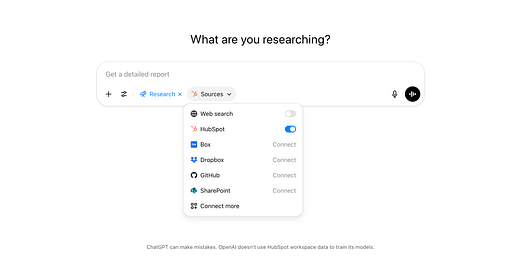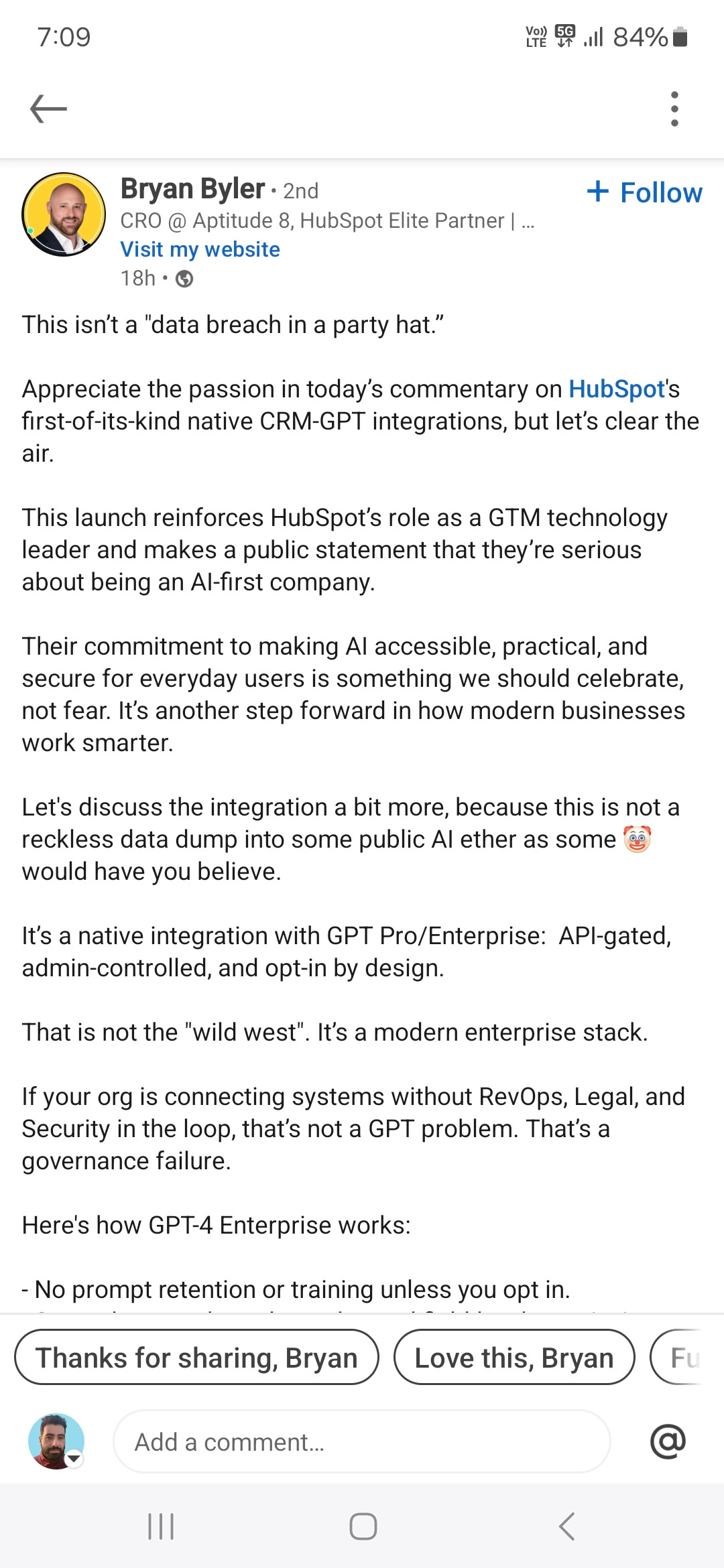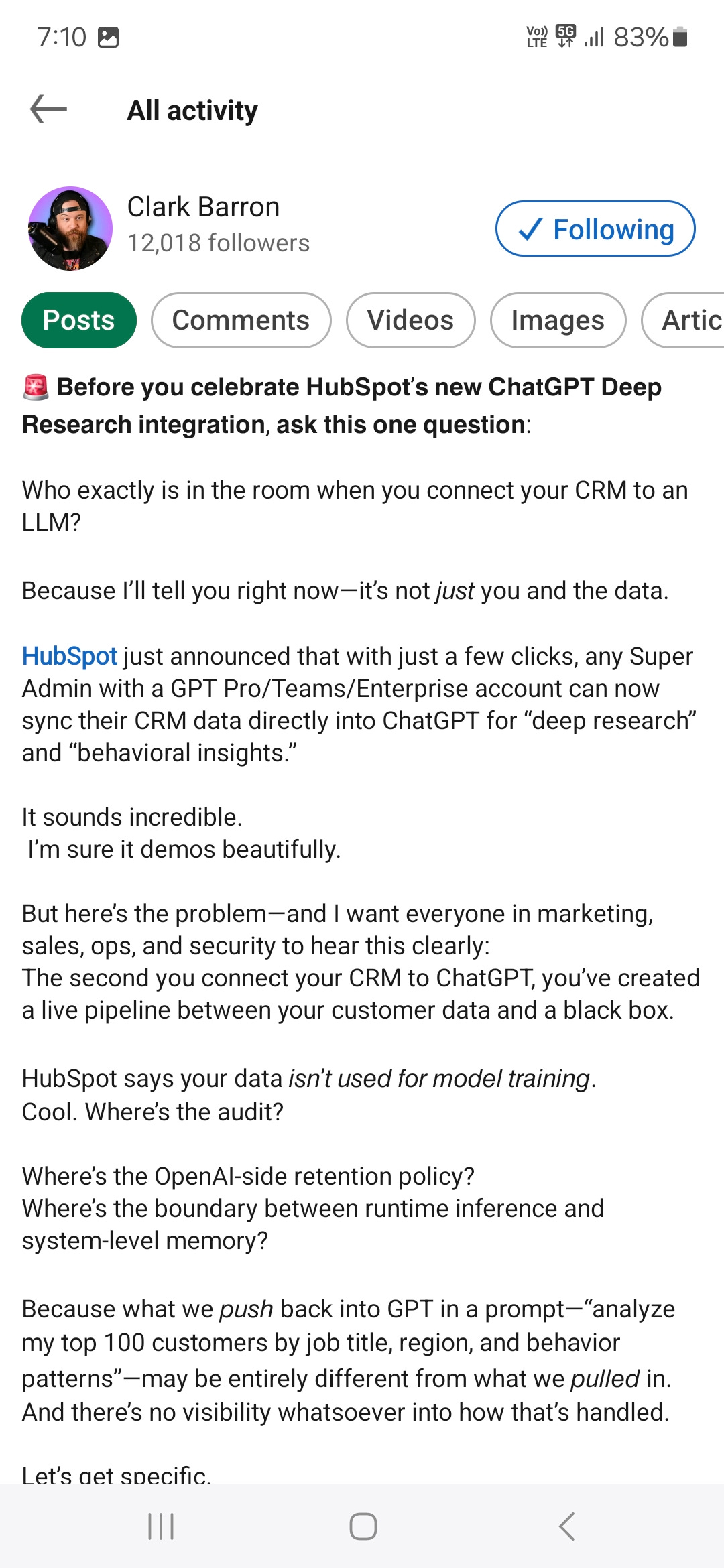HubSpot x ChatGPT: Smart Move or Security Nightmare? [Quick Edition]
HubSpot’s native ChatGPT integration is here. It promises deep research, smart CRM summaries, and lightning-fast insights.
But not everyone’s celebrating.
Some call it the future of sales enablement. Others call it "a data breach in a party hat."
So should you plug your whole CRM into an LLM?
Let’s look at both sides
P.S.: I am also uncertain but need to decide FAST! Feel free to add your thoughts in the cimments.
And, don’t forget to subscribe!
What HubSpot Just Launched
With HubSpot’s new OpenAI connector, Super Admins on Pro, Teams, or Enterprise plans can now sync CRM data directly into ChatGPT. That means:
Generate pipeline summaries with a prompt.
Identify behavioral patterns in high-LTV deals.
Analyze sales and support data in seconds.
All with scoped access, permission layers, and GPT-4.
It sounds incredible.
But is it safe?
The Case Against the Integration
Clark Barron isn’t anti-AI, but he is oir inner rebel made flesh.
His concern isn’t performance. It’s trust.
“The second you connect your CRM to ChatGPT, you’ve created a live pipeline between your customer data and a black box.”
Here are the red flags he raises:
No third-party audit of the CRM ➔ GPT ➔ inference path.
No clear boundary between runtime inference and system-level memory.
No contractual protection that push-prompt metadata isn’t used downstream.
This isn’t about paranoia. It’s about data stewardship.
And it gets even more real when you consider the prompts marketers/sales might use:
“Compare win rates between reps hired last quarter."
“Give me a list of customers with open tickets AND active opportunities."
“Which competitor is most likely to close revenue above $1M this quarter?”
Now you’re mixing:
PII
Revenue forecasts
Competitive targeting
Support data…
…and pushing it into an environment you don’t control. A black box!
So, Clark asks the one question more marketers should:
“Would your customer be okay with this prompt? Would your CISO? Would a regulator?”
If the answer is “I don’t know,” you don’t plug it in.
The Case For the Integration
HubSpot’s official launch page doesn’t shy away from the AI debate. Instead, it anchors its argument on governance and admin control.
According to HubSpot:
It’s API-gated.
It’s admin-controlled.
It’s opt-in by design.
It uses GPT-4 Enterprise: no training on your prompts, no data retention unless you choose.
If anything, the messaging is this:
"This isn’t AI for AI’s sake. It’s AI with a seat at the RevOps table."
And Bryan Byler echoes that sentiment:
“If your org is connecting systems without RevOps, Legal, and Security in the loop, that’s not a GPT problem. That’s a governance failure.”
He argues:
There’s visibility via audit logs.
There are boundaries via role-based access.
It’s a modern enterprise stack, not the Wild West.
His advice?
Caution: yes. Paranoia: no.
When Should You Plug In?
Implement the integration if:
You have a clean, well-structured CRM.
You have RevOps, Legal, and Security alignment.
You’re an incumbent who wins by moving faster.
Avoid it if:
You have compliance gray areas or lots of NDAs.
You can’t audit what’s being pushed or pulled.
Your team doesn’t understand how LLMs handle prompts.
Final Thoughts
The HubSpot x GPT integration isn’t just another AI tool.
It’s a mirror.
If your data, governance, and teams are solid—it might supercharge your org. If they’re not, it might expose your weakest link.
AI doesn’t fix bad processes. It accelerates them.
So before you plug it in, ask:
"Are we ready for the speed?"
What’s your take? Would you connect your CRM to GPT? Drop your thoughts below!






